Maha Kumbh 2025 and the Daunting Task of Ensuring Hygiene and Sanitation
11 Apr 2025 15:27:20
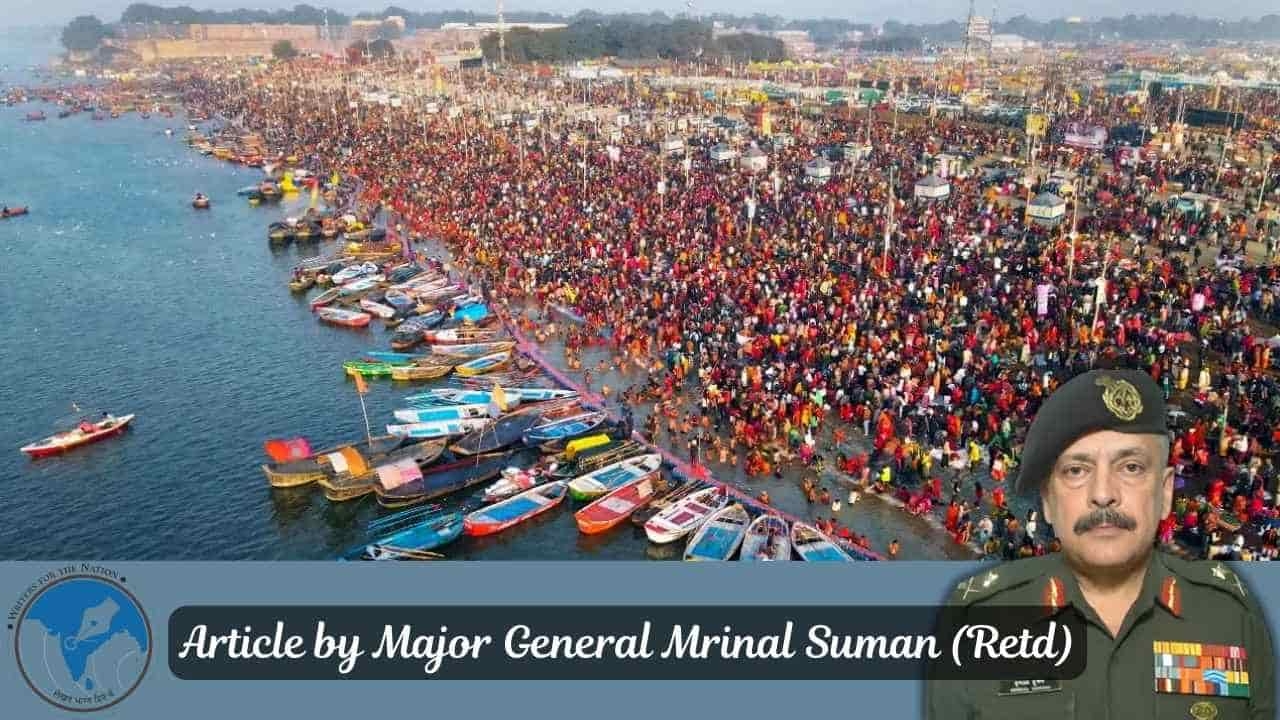
We visited the Maha Kumbh from 23 to 25 February. As we stayed in a tented city and traversed a number of ghats, we got an opportunity to observe the event at close quarters.
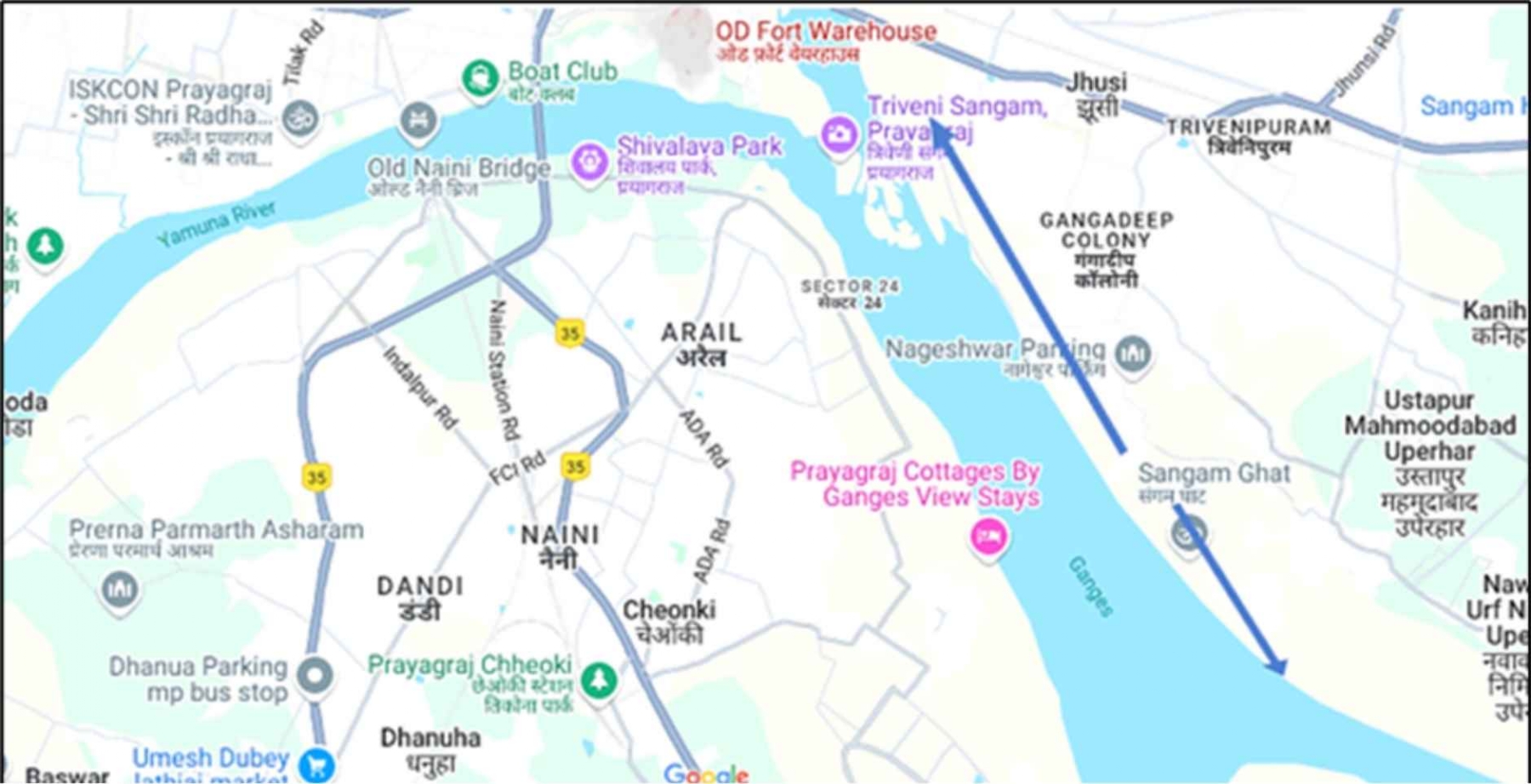
The Maha Kumbh was held at the 4,000-hectare mela grounds of Prayagraj from 13 January to 26 February 2025. It is said that a total of 66.30 crore devotees took the holy dip at Sangham, the confluence of the revered rivers Ganga, Yamuna, and Saraswati.
In addition to managing the crowds, the biggest challenge faced by the UP government was to maintain the purity of the sacred waters, ensure hygiene and sanitation of the area, and maintain the sanctity of the ghats. For that, public participation was rightly considered to be indispensable. Therefore, prior to the event, several initiatives were launched to encourage cleanliness. Awareness campaigns were organized through ‘Swachhata Rath Yatra’ by the Prayagraj Municipal Corporation. The people responded enthusiastically.
A budget of Rs 1600 crore was earmarked for ensuring hygiene and sanitation of the area during the event. The mela grounds were declared ‘plastic-free zones’, with an absolute ban on single-use plastics. The administration kept urging the pilgrims not to litter the area and to dispose of their garbage in the designated bins. Public address systems at the ghats kept broadcasting messages urging devotees to maintain cleanliness.
To make the Maha Kumbh an open-defecation-free event, the government spent Rs 316 crore on building temporary infrastructure. The enormity of the challenge can be gauged from the fact that over 1.5 crore pilgrims were defecating daily. At the normal planning scale of 250 gms of excreta per person per day, the total fecal sludge worked out to 3,750 tons per day.
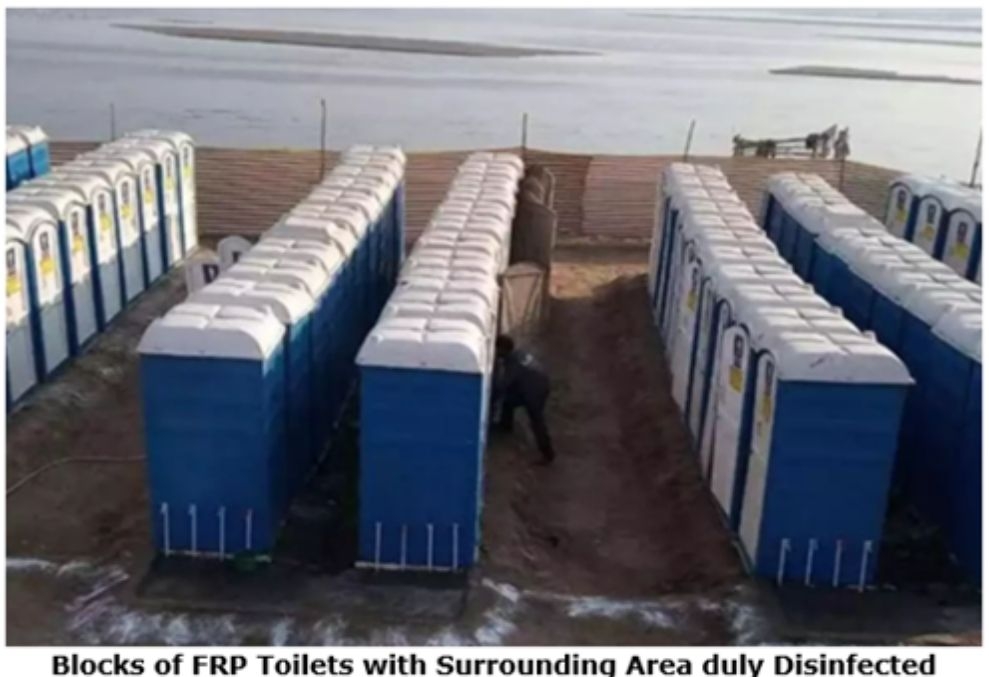
A total of 150,000 temporary toilets were constructed. These included 12,000 blocks of fiber-reinforced plastic toilets with septic tanks, 16,100 blocks of prefabricated steel toilets with soak pits, and 20,000 community urinals. These were strategically placed across the fairgrounds.
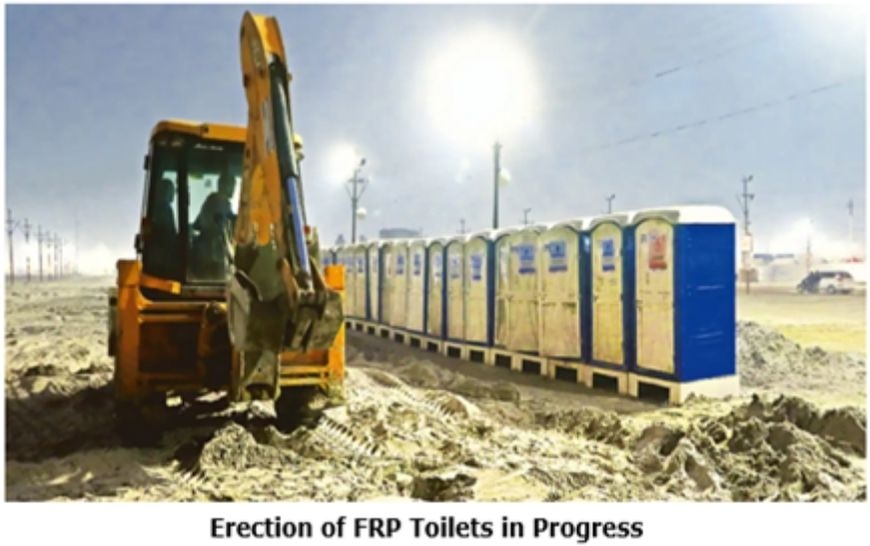
Foolproof measures had to be put in place to ensure speedy cleaning of the toilets and regular disposal of nearly 16 million liters of fecal sludge and 240 million liters of graywater. These were daunting tasks. The government handled both the issues with commendable forethought and advance planning.
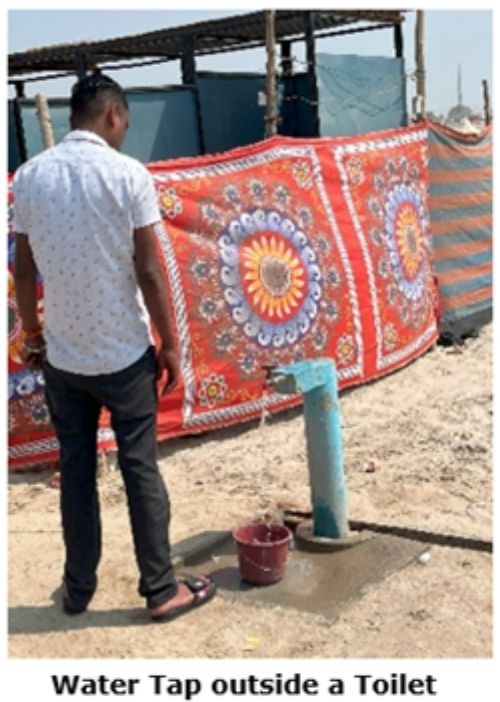
For regular cleaning of the toilets, a workforce of 15,000 sanitation workers (including 2,500 Ganga Sevadoots) was deployed. They worked in shifts to carry out cleaning round the clock—each toilet was cleaned every 20 minutes. Spraying of disinfectants and fogging was carried out at regular intervals.
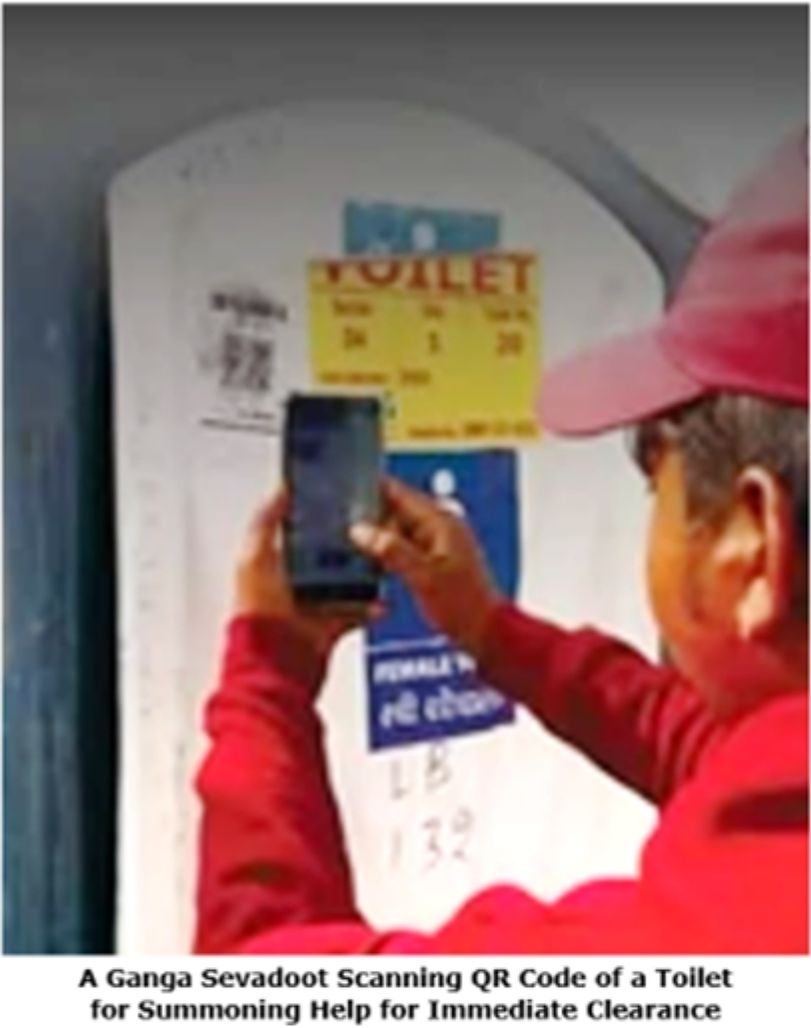
Making use of technology, every toilet block was assigned a QR code. Real-time monitoring of cleanliness was carried out by the Ganga Sevadoots. They scanned the QR codes of toilets requiring immediate cleaning. Such feedback triggered an instant alert for prompt action by the responsible teams, who swung into action within minutes of receiving a report.
For efficient sludge management, in addition to 11 permanent sewage treatment plants, 3 temporary fecal sludge treatment plants (FSTP) of 0.5 MLD capacity were set up with the assistance of BARC. Sludge was transported to fecal sludge treatment plants (FSTP) by nine cesspool vehicles (four with 4,000 liters capacity, three with 3,000 liters, and two with 1,000 liters capacity) and a network of sewage pipelines.
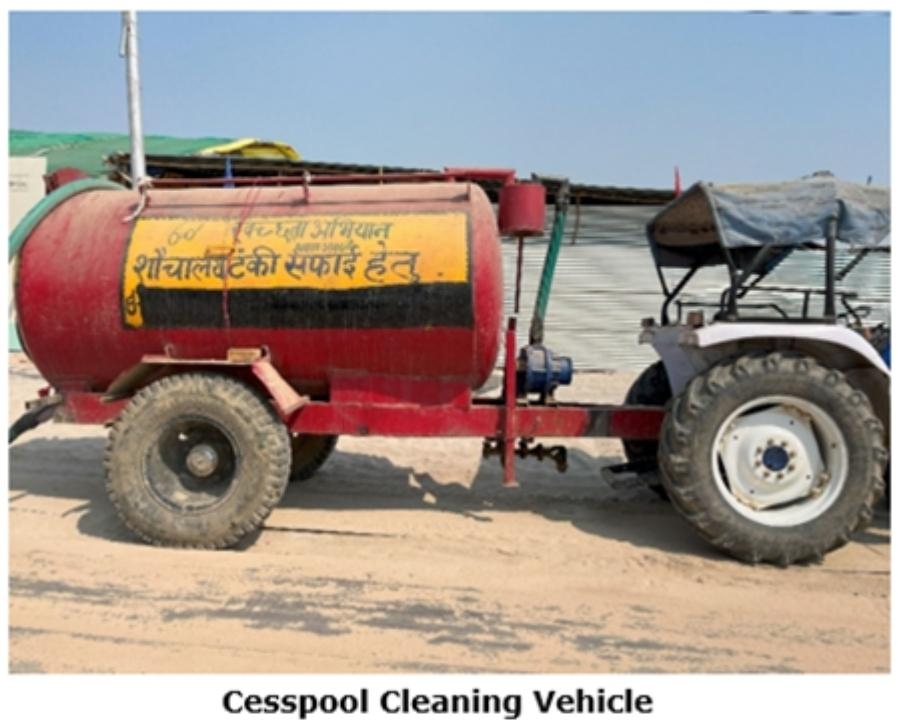
Wastewater was moved directly to FSTPs through the pipelines. FSTP separated solid and liquid wastes and converted them into vermicompost and water for non-potable uses such as gardening, flushing, and farming with appropriate treatment. For final clearance of the cesspools, a total of 244 cesspool suction tankers were deployed—150 were acquired from the private vendors to supplement 94 tankers held by the Prayagraj Mela Authority.
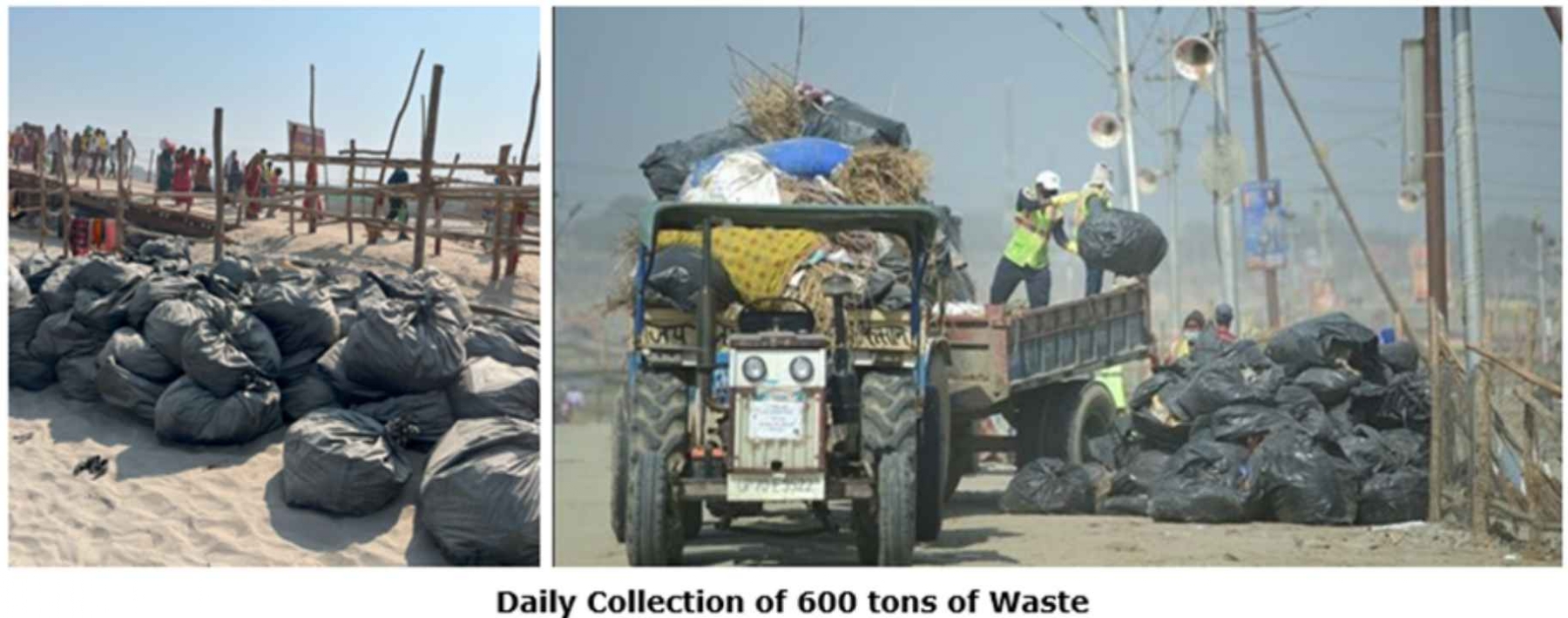
In addition, a total of 25,000 trash bins, equipped with 37.75 lakh liner bags, were installed across the mela grounds to facilitate systematic waste collection and disposal. The administration collected over 600 metric tons of waste daily and transported it to the Baswar waste processing plant on the city’s outskirts. For solid waste management, 120 tippers and 40 compactors worked in two eight-hour shifts.

Sanitation workers were the real heroes of the event. They worked round the clock to keep the area and the toilets clean. To them goes the entire credit for the successful conduct of the event in a clean and healthy environment. The state government had rightly laid a lot of emphasis on their well-being. Temporary colonies were established to provide proper housing and other amenities. Primary schools were run for their children with midday meals.
Maha Kumbh 2025 was a challenge of monumental proportions. The world had never witnessed a gathering of humans at this mammoth scale. In all aspects, it was an unprecedented undertaking.
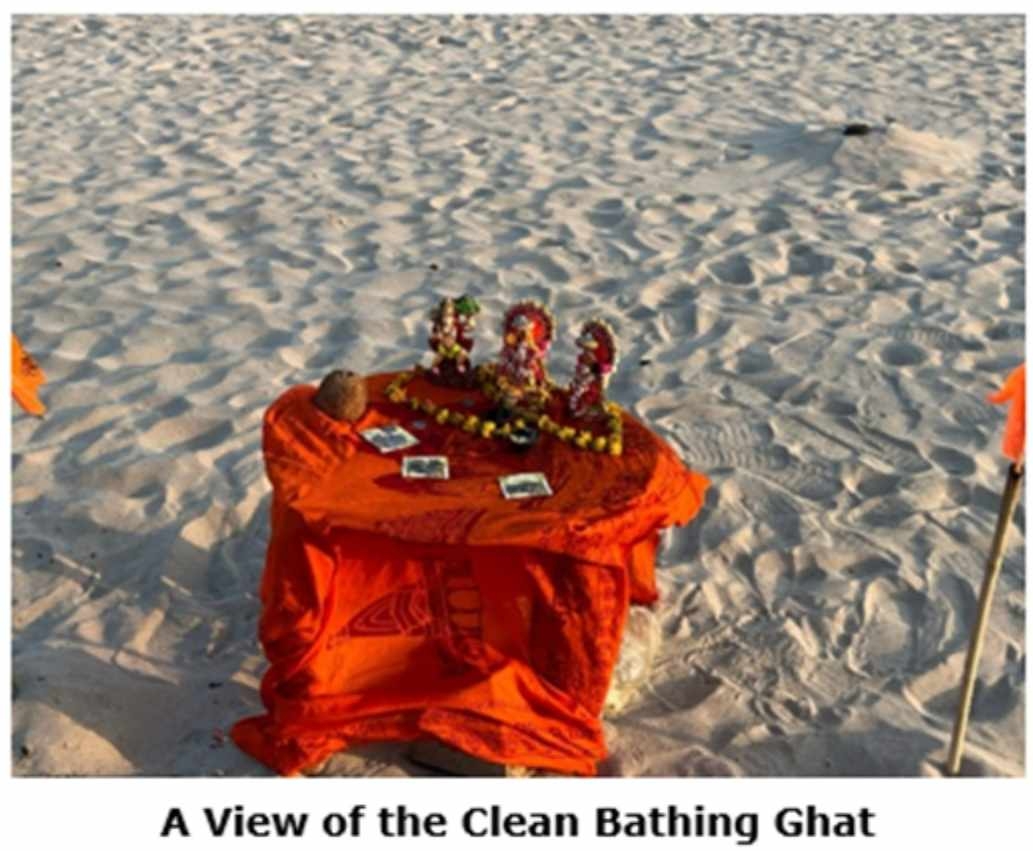
It is rightly said that the event has set new global benchmarks in waste management, river conservation, and eco-friendly practices. The state administration deserves credit for showcasing India’s organizational prowess in managing complex logistical and environmental challenges while maintaining a fine balance between spirituality and nature.
Article by

Major General Mrinal Suman (Retd)
AVSM, VSM, PhD, commanded an Engineer Regiment in the Siachen-Kargil sector. He was also the Task Force Commander at Pokhran and was responsible for designing and sinking shafts for the nuclear tests of May 1998. He is a highly qualified officer – B Tech, MA (Pub Adm), MSc (Def Studies) and Doctorate in Public Administration. He is a prolific writer having published nine books and over 550 articles.